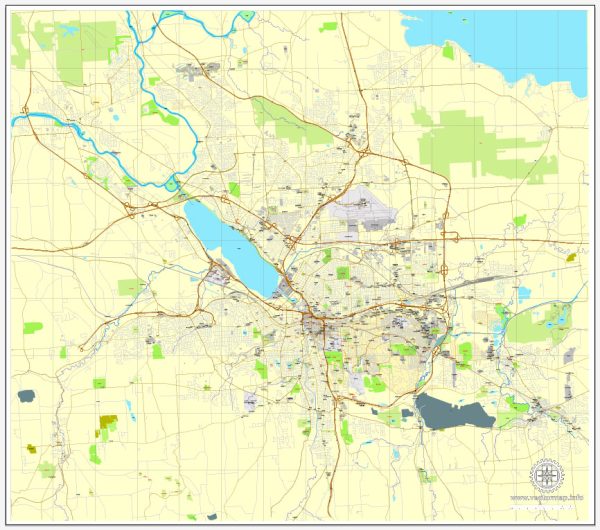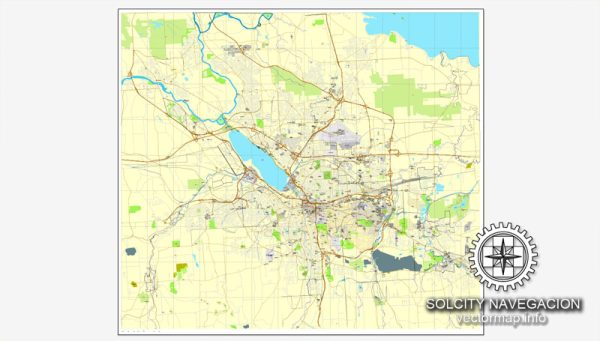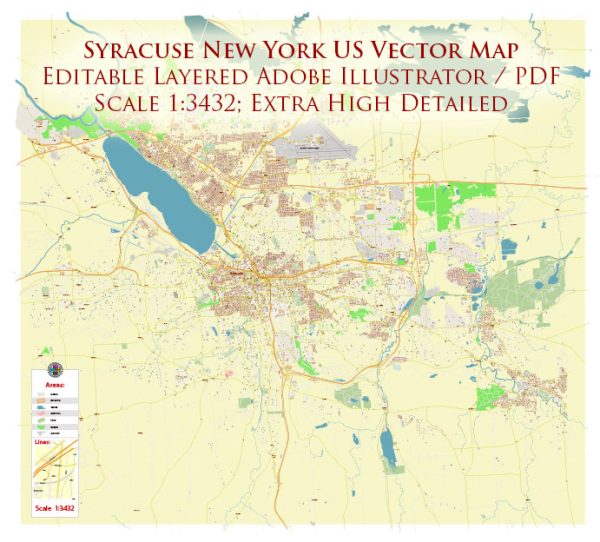Syracuse, located in central New York, has a rich history of urban development that reflects the broader trends in American urbanization. Here is a brief overview of the historical urban development of Syracuse:
- Early Settlement and Erie Canal Era (late 18th to mid-19th century):
- Syracuse was first settled in the late 18th century, but its growth accelerated with the construction of the Erie Canal in the 1820s. The canal connected the Great Lakes to the Hudson River, making Syracuse a crucial transportation hub. This led to the city’s rapid industrialization and population growth.
- Industrialization and Salt Industry:
- Syracuse became known for its salt industry, and the city’s salt springs were a significant economic driver. The production of salt, coupled with the transportation advantages of the Erie Canal, contributed to the city’s prosperity during the 19th century.
- Growth of Manufacturing and Industry (late 19th to early 20th century):
- In addition to salt production, Syracuse developed a diverse industrial base, including manufacturing, machinery, and steel production. The city’s economy continued to thrive, attracting a growing population and contributing to the expansion of urban infrastructure.
- Expansion of Higher Education:
- Syracuse University, founded in 1870, played a crucial role in the city’s development. The university became a center for education and research, contributing to the cultural and intellectual vibrancy of the community.
- Suburbanization and Transportation Changes (mid-20th century):
- Like many American cities, Syracuse experienced suburbanization in the mid-20th century, as people began moving to the suburbs, facilitated by the growth of the automobile culture. This shift had implications for the city’s demographics and urban planning.
- Urban Renewal and Redevelopment (mid-20th century):
- Like many cities across the United States, Syracuse implemented urban renewal projects in the mid-20th century. While some of these projects aimed to revitalize downtown areas, others resulted in the demolition of historic structures, leading to mixed outcomes for the urban landscape.
- Economic Challenges and Revitalization Efforts (late 20th century to present):
- Syracuse, like many Rust Belt cities, faced economic challenges as manufacturing declined. However, the city has undertaken various revitalization efforts, focusing on diversifying the economy, promoting technology and research, and enhancing the quality of life.
- Cultural and Arts Scene:
- Syracuse has a vibrant cultural and arts scene, with museums, theaters, and galleries contributing to the city’s cultural identity. The historic Armory Square district, once an industrial area, has been revitalized into a popular destination with shops, restaurants, and entertainment venues.
- Modern Urban Planning and Sustainability:
- In recent years, Syracuse has embraced modern urban planning principles, focusing on sustainability, green spaces, and community development. Efforts have been made to preserve historic architecture while promoting a more livable and environmentally conscious urban environment.
- Challenges and Opportunities:
- Syracuse continues to face challenges, including economic disparities and infrastructure needs. However, ongoing efforts to attract businesses, invest in education, and revitalize neighborhoods indicate a commitment to the city’s future development.
Understanding Syracuse’s history of urban development provides insights into the broader trends shaping American cities and the ongoing efforts to adapt to economic and social changes.




 Author: Kirill Shrayber, Ph.D.
Author: Kirill Shrayber, Ph.D.